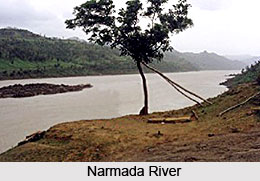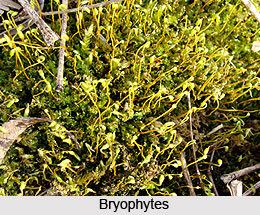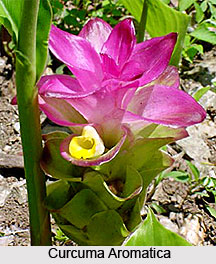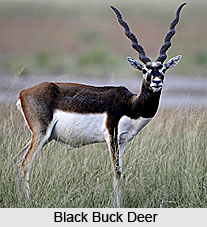 The Achanakmar-Amarkantak Biosphere Reserve is the most dramatic and ecologically diverse landscape in the Chhattisgarh and Madhya Pradesh states of India. It is one of the less developed and least disturbed areas in both the states. It encompasses most of the original natural and cultural features.
The Achanakmar-Amarkantak Biosphere Reserve is the most dramatic and ecologically diverse landscape in the Chhattisgarh and Madhya Pradesh states of India. It is one of the less developed and least disturbed areas in both the states. It encompasses most of the original natural and cultural features.
Geography of Achanakmar-Amarkantak Biosphere Reserve
Achanakmar-Amarkantak Biosphere Reserve is located in the states of Madhya Pradesh and Chhattisgarh. The Achanakmar-Amarkantak Biosphere Reserve is one of the premium biosphere reserves in India. The reserve covers a huge area of 3835.51 sq. km. and it falls in almost northern part of Bio-geographic zone of 6 and Bio-geographic province 6a (Deccan peninsula, central highlands). About 68.10% out of the total area of this reserve lies in the Bilaspur district in Chhattisgarh. The other major portions of the reserve fall in the Anuppur (16.20%) and Dindori (15.70 %) districts of Madhya Pradesh. The protected area, Achanakmar Sanctuary is located in Bilaspur district, within the area of the Biosphere Reserve. The sanctuary has a total geographical area of 551.15 sq. km.
The Achanakmar-Amarkantak Biosphere Reserve has been divided into core and buffer zones. The entire area of the Achanakmar Sanctuary is designated as the core zone of the reserve and the rest of the 3284.36 sq. km. are serving as the buffer zones, of this reserve. Out of the total area of the buffer zone, an area of 1224.98 sq. km. falls in the state of Madhya Pradesh and the remaining area of 2059.38 sq. km. falls in the Chhattisgarh state. The topography of the Biosphere reserve varies from the rice fields below in Bilaspur and Anuppur and the wheat fields in Dindori, to the hills of Maikal range of Satpuras. The topography of the soil in the Amarkantak plateau is of bauxite rocks. Several streams and Nallas are flowing through the reserve and many of them are perennial. The area of the Achanakmar-Amarkantak Biosphere Reserve is considered as one of the major watershed of peninsular India. It separates the rivers that drain into the Arabian Sea and Bay of Bengal. The reserve is also unique for being the source of three major river systems like Narmada, Johilla and Sone of the Ganga basin, and also the Ama Nallah stream. The junction of the hill ranges like Vindhya and Satpura, the Maikal hill ranges lie within the Achanakmar-Amarkantak Biosphere Reserve.
 Climate of Achanakmar-Amarkantak Biosphere Reserve
The typical monsoon climate of the reserve has three distinct seasons like summer (March-June), rainy (July-October) and winter (November-February). The months of May and June are generally the hottest in the reserve, while the coolest months are December and January. The south western monsoon brings rainfall to the area during the months of June to September.
Climate of Achanakmar-Amarkantak Biosphere Reserve
The typical monsoon climate of the reserve has three distinct seasons like summer (March-June), rainy (July-October) and winter (November-February). The months of May and June are generally the hottest in the reserve, while the coolest months are December and January. The south western monsoon brings rainfall to the area during the months of June to September.
Flora and Fauna Achanakmar-Amarkantak Biosphere Reserve
The natural vegetation in the Achanakmar-Amarkantak Biosphere Reserve varies from place to place. The forest area of the reserve represents the tropical deciduous vegetation and it can also be classified into Northern Tropical Moist Deciduous and Southern Dry Mixed Deciduous forests. The reserve is quite rich in plant diversity, for having a combination of different climatic and edaphic conditions at various altitudes. The region provides shelter to various flora species that belong to the thallophytes, bryophytes, pteridophytes, gymnosperms, and also the angiosperms. More than thousand plant species, representing over 151 plant families can be found in this reserve.
Many species of grasses are also found in the Achanakmar-Amarkantak Biosphere Reserve area. Apart from them, the area is abode to more than 25 species of pteridophytes, including Selaginella ciliaris, Selaginella longipila, Equisetum debile, Aleuritopteris farinosa, Pteris quadriaurita, Ceratopteris thalickrioides, Blechnum orientale, Asplenium cheilosorum, osmunda sp., Cyclosorus parasiticus, Athyrium falcatum, Tectaria macrodonta, Lygodium flexuosum, Ophioglossum reticulatum etc. Most of these ferns are terrestrial in habit and grow deep inside the ravines in the Sal forest habitat. An insectivorous species named Drosera is also found in the plateau of Amarkantak, and covers about 1 sq km area that is named as `Drosera plateau`.

Several angiospermic species are found in the Achanakmar-Amarkantak Biosphere Reserve. Some of the important species include Thalictrum sp., Dillenia pentagyna, Cocculus hirsutus, Flacourtia indica, Talinium portulacifolium, Tamarix ericoides, Abelmoschuus ficulneus, Hibiscus subdariffa, Corchorus fascicularis, Grewia rothii, Biophytum sp., Oxalis sp., Tropaeolum majus, Gloriosa superba, Curcuma aromatica, Dioscorea sp., Chlorophytum tuberosum, Curculago orchioides, Hypercum japonicum, etc. Many planted gymnosperms have also been localized in the Amarkantak plateau and have been adapted to the local environmental conditions of the area. Some of them are considered as endemic species that include Cupressus torulosa, Thuja oreintalis, Araucaria bidwilli, Pinus caribbea, P. elliotti, P. gregaii, P. kesiya, P. mountzumae, P. oocarpa, P. patula, P. ponderosa, P. pseudostrobus, P. roxburghii, P. serotina, Cedrus deodara, Juniperus sp. and Taxodium sp., etc. Apart from these, more than 105 species of medicinal plants are found in the Achanakmar-Amarkantak Biosphere Reserve, as well, out of which, 25 species are considered as rare.
The faunal composition of the Achanakmar-Amarkantak Biosphere Reserve is quite rich. A much better population of wildlife can be found in the Achanakmar Sanctuary, in comparison to the other reserved forest areas included in the biosphere reserve. The main reason behind this is the better protection and improved habitat conditions found in the Sanctuary, due to the conservation actions taken so far. According to the 2004 census, the Achanakmar Sanctuary is home to 26 Tigers, 46 Panthers, 28 Bears, 1936 Chitals, 1369 Sambhars, 376 Barking Deer, 552 Bisons (Gaur). Apart from these, the other important fauna species found in the reserve include the Black Buck, Chinkara, Wolves, Foxes, Jackals, Spotted Deer, Sambhar, Bison, Wild Boar, Monkeys, Giant Squirrels, etc. Besides the rich variety of vegetation and mammal fauna species, the reserve also provides natural habitat to 170 bird species belonging to 51 families. Over 13 species of Snakes and Lizards along with several species of Frogs (Cricket Frog, Burrowing Frog, Tree Frog, Ornate Narrow Mouthed Frog, Toad, Bull-Frog, etc.) are found in the reserve, as well.
 Other Attractions
Other Attractions
Apart from providing natural habitat to a huge variety of flora and fauna species, the Achanakmar-Amarkantak Biosphere Reserve is also one of the favourite tourist destinations in India. Numerous tourists visit the reserve every year and the most attractive scenic spots in the reserve include Chaura Dadar, Kabir Ka Chabutra, Durgdhara and Sambhoodhara, Sonemuda, temples of Narmada origin, etc. The tourists also love to visit the Rakshasakh, Shinhawal Sagar and Mendri Sarai, located in Achanakmar Sanctuary. There are also many religious places located in the biosphere reserve area, including the Narmada Temple, Mai Ki Bagia, Sone Muda Temple, Sidhi Vinayak and Paras Vinayak Pataleswar Mahadev and Shiv Temple (Jaleshwar). The historical places like Rangmahal at Amarkantak and Pandwani Talab and Lakshmandongri in Achanakmar sanctuary are also some of the other major tourist attractions in the area.
Visiting Information
Bilaspur Railway station is the closest to the reserve. A taxi from the station can be taken to reach Achanakmar Tiger Reserve which is around 60 kilometers away. From Bilaspur junction, by road Achanakmar Tiger Reserve is one and half hour away. Nearest airport is Raipur, and it is around 200 kms away from the Achanakmar Tiger Reserve.
The Achanakmar-Amarkantak Biosphere Reserve is playing an important role in preserving the rich wildlife of India, by providing natural habitat to several flora and fauna species.











